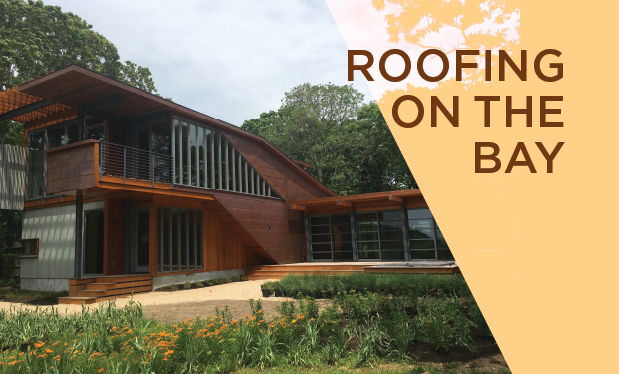The number of available jobs in the roofing industry is projected to increase 12% through 2028, an above-average rate for most U.S. occupations, according to the Bureau of Labor Statistics. Outpacing teaching and accounting positions, the growing number of roofing jobs reflects a competitive industry driving roofing business owners to use every advantage they can to thrive.
Homeowners, building owners and general contractors hire roofing contractors for their skills in assessing, installing, maintaining and repairing roof systems of all kinds—from thatch and wood shingles to slate and clay tiles. Many skills needed for successful roof system installations have remained consistent over time, but rapid changes in technologies have improved ways you can prospect, estimate and quantify roofing projects.
During the past few years, aerial imagery technology has taken off in the roofing industry. The ability to use aerial images to survey, inspect and generate accurate job quotes has become a new reality. Now with an eye-in-the-sky vantage point, you can use aerial imagery from oblique 45-degree angles to top-down orthographic perspectives at your work sites.
Satellites and drones
The most common forms of sky-to-Earth imagery people recognize are satellite and drone imagery. Thousands of miles away, satellites capture far-reaching images of Earth’s surface. The downside of this incomparably broad perspective is a lack of clarity. Shooting 30 cm per pixel means zooming in for details and finding fuzzy results. Capturing images of the same location also can take years, resulting in old and often inaccurate data.
At the same time, the drone revolution is putting affordable aerial photo and video cameras into the hands of amateurs and professionals. These miniature marvels offer custom images with superior detail from almost any angle and altitude. However, drones often lack software that provides intuitive tools required to create accurate roofing estimates. In addition, Federal Aviation Administration certification requirements and ensuring you are flying in authorized areas create challenges that can outweigh results.
Aerial imagery
Aerial imagery shares many benefits with satellites and drones and provides high-resolution images, access to current and archived photos, and the means to quickly assess emergencies and natural disasters, as well as anywhere, anytime convenience, making it a valuable tool for roofing contractors.
Aerial imagery capture can be performed by helicopters, balloons and—most efficiently—airplanes. A satellite captures images from great distances, but an airplane can get much closer to job sites and photograph them at a much higher resolution. Airplanes also can cover far more territory than a drone, flying across the U.S. to canvass a massive range of land and properties.
More accurate estimates
Aerial imagery gives your roofing business access to industry-leading technology that helps you generate accurate estimates. By using an application such as MapBrowser, you can estimate the work needed on a roof from a variety of angles, annotate the image and use a copy of that image in a report or presentation to clients.
Exploring properties with aerial imagery can help you create informed designs and visually engaging customer quotes while managing labor and material requirements.
Clear, high-resolution images
Because airplanes can fly at lower altitudes than satellites, aerial imagery provides up to four times greater resolution than satellite imagery. The detailed imagery means you can analyze how a roof is degrading or maintaining its integrity over time using historical data. Higher resolution also equals high-fidelity and dependable estimates.
Aerial imagery also has the capability to manipulate photos, zooming in close without losing visual integrity. An excellent way to earn trust with your customers is sharing high-resolution images of their properties. Aerial imagery helps you show homeowners damaged areas and explain the work you plan on doing for them.
For commercial roofing contractors, high-resolution imagery provides powerful insights while assessing large roofing projects. Using aerial imagery, you can identify HVAC equipment, note key access points, analyze parapet depth and make notes of other important roof features. The ability to inspect images with clarity also enables you to diagnose trouble spots and prepare for material and workforce needs.
Using highly detailed aerial images also is a powerful way to generate word-of-mouth business opportunities. After completing a project, you can create follow-up opportunities with customers by sharing updated aerial photos of their new roof systems. It’s an excellent way to ensure customer satisfaction while creating an opening to their network of homeowner friends.
Access to archived images
Capturing 330,000 square miles of land including most U.S. cities is impressive. However, doing so multiple times per year is what makes aerial imagery valuable. For instance, shooting in different seasons means you can compare property images with and without leaves on trees.
The ability to access archived images means you can make compelling side-by-side property comparisons to track how a roof system changes over time. Because aerial image planes chart overlapping courses, an end-user always will have access to seamless and detailed views your competitors don’t have.
Quick response to emergencies
In 2017, 5.2 million property and casualty insurance catastrophe claims were made, totaling $101.9 billion, according to the Rocky Mountain Insurance Information Association. With historical archives dating back to 2014, roofing professionals can view before and after images that can be invaluable after natural disasters.
The days following an extreme weather event often are an essential time for you to help homeowners and building owners repair their roof systems. Whether it’s high winds, snowstorms, hail, rain, hurricanes or tornadoes that occurred, having instant access to property images gives your roofing business an advantage when communicating with prospective customers.
On a similar note, using up-to-date aerial imagery also can help you generate business by identifying damaged roof systems. One sure-fire method is to scan for blue tarps—a telltale sign homeowners are in need of roof system repairs or replacements. These potential customers want their estimates fast and accurate, which you can provide with aerial imagery. With instant access to thousands of roof images, your ability to generate new business leads increases when using aerial imagery.
Anywhere, anytime availability
Inspecting roof systems always has been a necessary yet time-consuming part of operating a roofing business. Instead of spending hours every week driving from site to site, consider all the time your team members can save by having all the quote-building information available on their mobile devices.
With aerial imagery data stored in the cloud, you can access high-resolution property images from your laptop, tablet and other mobile devices. Regardless of current weather conditions, time of day or location, you will have instant access to a wealth of vertical, panoramic and oblique rooftop views at your convenience.
Although aerial imagery is not without cost, unlike free sources such as satellite imagery or government data sources, aerial imagery provides a higher resolution and is more up-to-date. When using aerial imagery, you can be confident that what you see is a clear and current representation of what’s on the ground, which leads to more accurate estimates and more time saved by avoiding unnecessary site visits. This efficiency ultimately translates to freeing up more resources to invest in your business.
Your future success
Making a long-term plan for your roofing business is a necessary step to achieving your professional and personal goals. That plan includes growing your market share by reaching more customers and providing fast and accurate bids. Aerial imagery gives your business the ability to view locations in detail without stepping foot on-site. When you begin using aerial imagery, you see how vital it can be for the future success of your roofing business.
Natasha Ridley is director of product—apps for Nearmap, South Jordan, Utah.
To read more about this topic, see “What’s imagery got to do with it?” April 2012 issue.



